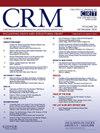需要输注红细胞的经导管主动脉瓣置换术(TAVR)患者的疗效:全国视角。
IF 1.6
Q3 CARDIAC & CARDIOVASCULAR SYSTEMS
引用次数: 0
摘要
背景:经导管主动脉瓣置换术(TAVR经导管主动脉瓣置换术(TAVR)可能因围手术期出血、溶血、血管事件或与抗血小板治疗相关的严重出血而并发贫血:我们利用全国住院病人抽样(NIS)数据库研究了接受 TAVR 并出现需要输注红细胞(RBC)的严重贫血患者的预后:这是一项利用2016年至2017年NIS数据库进行的回顾性队列研究。我们使用 ICD-10 和 PCS-10 编码识别了接受 TAVR 并需要输注红细胞的患者。主要结果是全因住院死亡率,次要结果是住院费用和住院时间(LOS)。统计分析采用学生 t 检验、卡方检验和方差分析(如适用)。多变量逻辑回归用于调整潜在的混杂因素。数据分析采用 STATA 15.0:2016-2017年,共有18325名患者接受了TAVR。其中,6.7%的患者需要输注RBC。输血组患者的年龄相对较大(81 岁 vs 79 岁;P 结论:输血组患者的年龄相对较大:在接受 TAVR 的患者中,输血与不良后果相关,包括死亡率、住院时间和住院费用的增加。为优化患者预后,需要进一步研究谨慎选择患者、合理使用抗血小板、抗凝药物和术前优化贫血的作用。本文章由计算机程序翻译,如有差异,请以英文原文为准。
Outcomes in transcatheter aortic valve replacement (TAVR) patients requiring red blood cell transfusion: A nationwide perspective
Background
Transcatheter aortic valve replacement (TAVR) can be complicated by anemia due to periprocedural bleeding, hemolysis, vascular events, or significant bleeding associated with antiplatelet therapy.
Objective
We used the National Inpatient Sample (NIS) database to study the outcomes of patients who underwent TAVR and developed significant anemia requiring red blood cell (RBC) transfusion.
Methods
This is a retrospective cohort study utilizing the NIS database from 2016 to 2017. We identified patients who underwent TAVR and required RBC transfusion using ICD-10 and PCS-10 codes. The primary outcome was all-cause inpatient mortality, and the secondary outcomes were the cost of hospitalization and length of stay (LOS). Student t-test, Chi-square, and ANOVA were utilized for statistical analysis where applicable. Multivariate logistic regression was used to adjust for potential confounders. STATA 15.0 was utilized for data analysis.
Results
A total of 18,325 patients underwent TAVR in 2016–2017. Among them, 6.7 % of patients required RBC transfusion. Patients were relatively older in the transfusion group (81 yrs vs 79 yrs; p < 0.001). The mean cost of hospitalization was higher in the transfusion group (283,153 USD vs 208,939 USD; p < 0.001). The mean length of stay (LOS) was higher in the transfusion group (9.0 days vs 4.3 days; p < 0.001). Patients in the transfusion group had higher inpatient all-cause mortality compared to patients without transfusion (6.1 % vs 1.3 %; odds ratio 4.94; p < 0.001, 95 % CI 3.7–6.4). Inpatient mortality and LOS didn't differ by race or sex in the transfusion group. All-cause mortality, LOS, and cost of hospitalization were independently increased by transfusion after adjusting for potential confounders i.e. sex, race, hospital teaching status, hospital region, heart block, pacemaker, arrhythmias, heart failure, diabetes, pulmonary hypertension, CKD, and others using multivariate logistic regression.
Conclusion
In patients undergoing TAVR, blood transfusion was associated with adverse outcomes including increased mortality, length of stay, and cost of hospitalization. The role of careful patient selection, judicious use of antiplatelets, anticoagulants, and pre-procedural optimization of anemia needs further investigation to optimize patient outcomes.
求助全文
通过发布文献求助,成功后即可免费获取论文全文。
去求助
来源期刊

Cardiovascular Revascularization Medicine
CARDIAC & CARDIOVASCULAR SYSTEMS-
CiteScore
3.30
自引率
5.90%
发文量
687
审稿时长
36 days
期刊介绍:
Cardiovascular Revascularization Medicine (CRM) is an international and multidisciplinary journal that publishes original laboratory and clinical investigations related to revascularization therapies in cardiovascular medicine. Cardiovascular Revascularization Medicine publishes articles related to preclinical work and molecular interventions, including angiogenesis, cell therapy, pharmacological interventions, restenosis management, and prevention, including experiments conducted in human subjects, in laboratory animals, and in vitro. Specific areas of interest include percutaneous angioplasty in coronary and peripheral arteries, intervention in structural heart disease, cardiovascular surgery, etc.
 求助内容:
求助内容: 应助结果提醒方式:
应助结果提醒方式:


